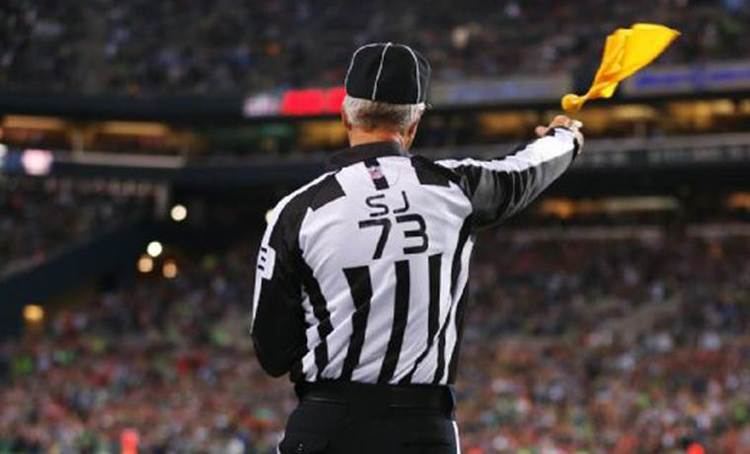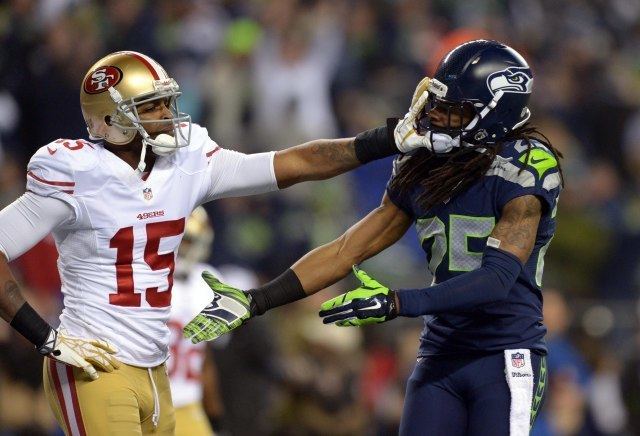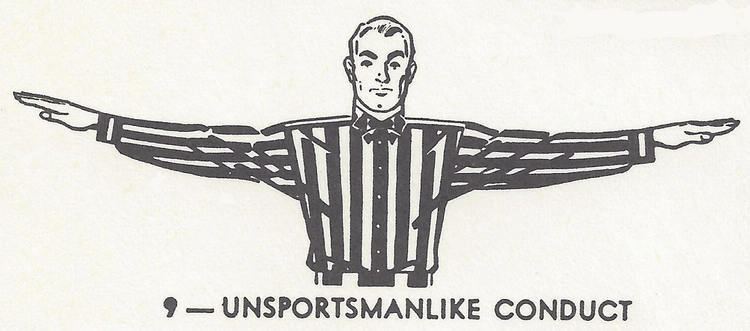 | ||
Unsportsmanlike conduct 2010
Unsportsmanlike conduct (also called unsporting behaviour or ungentlemanly conduct or bad sportsmanship) is a foul or offense in many sports that violates the sport's generally accepted rules of sportsmanship and participant conduct. Examples include verbal abuse or taunting of an opponent, an excessive celebration following a scoring play, or feigning injury. The official rules of many sports include a catch-all provision whereby participants or an entire team may be penalized or otherwise sanctioned for unsportsmanlike conduct.
Contents
- Unsportsmanlike conduct 2010
- T j yeldon throat slash unsportsmanlike conduct penalty
- Examples in different sports
- Match fixing
- References

T j yeldon throat slash unsportsmanlike conduct penalty
Examples in different sports
In American football, unsportsmanlike conduct results in a 15-yard penalty (or 10 in the AFL), assessed after the completion of a play. When it occurs after a scoring play, the 10 or 15 yards are assessed on the kickoff. Situations that can incur such a penalty include excessive celebrations after plays, often involving props or multiple players or engaging in taunting against an opponent; a player's purposeful removal of his helmet anywhere in the field of play during or in between plays; or if a substitute leaves the team bench during a fight. Unsportsmanlike conduct can also lead to players or officials being ejected from the game if the conduct is found to be flagrant. In the NCAA, NFL & AFL, two unsportsmanlike conduct fouls lead to the offender's ejection. The referee signals unsportsmanlike conduct by holding his arms outstretched with palms facing downward. Coaches can also receive an unsportsmanlike-conduct penalty for taunting, arguing with, or abusing officials, one of the few times a coach's actions can be penalized outside of the rare palpably unfair act penalty; but can't be ejected.

In association football, the term "unsporting behaviour" is more commonly used. Unsporting behaviour, which includes fouls, is punishable by a yellow card under law 12 of the laws of the game. Other examples include extravagant goal celebrations (e.g. removing one's jersey) and simulating actions intended to deceive the referee (diving).

In basketball, such misconduct is penalized by a technical foul as opposed to a personal foul. The technical foul is akin to a caution in that two such fouls warrant an expulsion, although egregious conduct will be immediately assessed two consecutive technical fouls.

In tennis, such conduct is categorized as a "code violation". Examples include racket abuse (intentionally throwing a racket or using it to strike an object other than the ball), ball abuse (intentionally hitting or throwing the ball into the stands outside of normal play), or intentionally shouting during a point in order to distract an opponent. Penalties vary based on the organizers of the match or tournament and usually start with a verbal warning for a first violation, and forfeiture of a point, game, or a match for additional violations.
In cricket, such behavior is considered to be violating the "spirit of the game". The preamble to the "Laws of Cricket" state certain actions which may violate the spirit of cricket. A more detailed list (along with appropriate sanctions) is given in the ICC Cricket Code of Conduct. Since good behaviour in cricket is traditionally deemed the sine qua non of a gentleman to the game's historical status as a "gentleman's game", it has led to the saying, "It's not cricket", an English language phrase meaning unsportsmanlike conduct in sports, in business, or in life in general. There is considerable debate over whether sledging should be deemed as "unsportsmanlike behavior" and banned due to several high profile punishable instances of racial and verbal abuse during international matches; proponents have argued that sledging was meant to be witty and humorous and not a personal attack on the opposition player.
In ice hockey, unsportsmanlike conduct is defined in Rule 75 of the National Hockey League Rule Book as follows: "Players, goalkeepers and non-playing Club personnel are responsible for their conduct at all times and must endeavor to prevent disorderly conduct before, during or after the game, on or off the ice and any place in the rink. The Referees may assess penalties to any of the above team personnel for failure to do so." A player can receive a two-minute penalty for unsportsmanlike conduct.
In Formula 1, drivers are shown a black-and-white flag for unsportsmanlike driving.
NASCAR likewise has section 12-4, which prohibits actions that are 'detrimental to stock car racing'. This was invoked against Michael Waltrip Racing as a result of apparently gaming the system in order to allow their driver Martin Truex, Jr. to make the 2013 Chase for the Cup.
Match fixing
Unsportsmanlike conduct also includes attempts by players of match fixing, which has seen teams deliberately lose (a thrown game) or achieve draws or select scores, in order to receive a more favorable knockout bracket or a higher draft pick.
